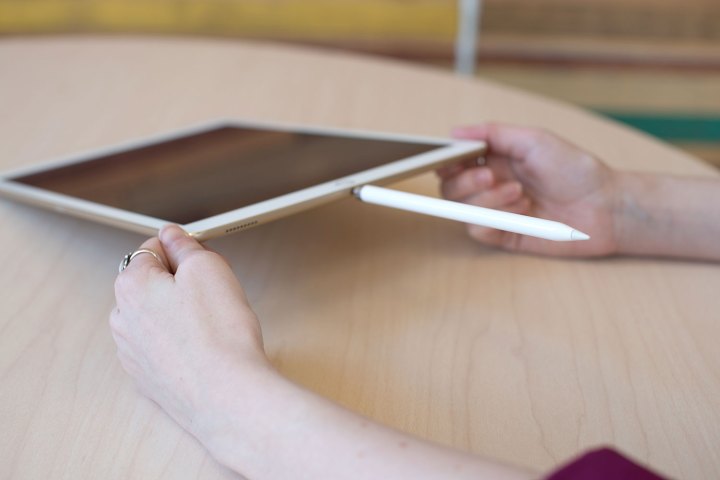
Apple launched a new stylus yesterday. The company is pushing it as an affordable alternative to the second-gen Apple Pencil. In typical Apple fashion, though, the latest stylus — called the Apple Pencil (USB-C) — is still not the most affordable option for your slate. Actually, far from it.
But it finally washes away an embarrassing product blunder, one that crippled the original Apple Pencil functionally and also made it alaughingstock from a design perspective. I won’t say much and will let the issue itself do the talking with this beautiful image:

Also, when the original Apple Pencil ran out of juice, you had to push its Lightning connector inside the iPad’s Lightning port. It was bad. But then it got worse!
With the introduction of iPads with a USB-C port, stylus fans had to spend a few extra dollars to buy an adapter — something that was made infamous with the iPad 10th generation. It was the opposite of convenient, to put it subtly. And it looked even worse, as you can see in the image below:

Apple addressed the problem by adding magnetic charging to the second-gen Apple Pencil, ensuring that it never runs out of charge as it always sits atop your iPad. But then, at $129, it was quite a hefty asking price for a stylus. That’s where the Apple Pencil (USB-C) comes into the picture.
It costs $79, attaches magnetically to any iPad, and features a USB-C port for charging. You no longer have to plug it directly into an iPad or power port. As long as you’ve got a USB-C cable, you can juice it up.

Apple skipped magnetic charging on this one to justify the lower cost, despite the design being identical to the second-gen Apple Pencil. But it’s also a blessing in disguise. Compared to a magnetic charging strip, a charging system facilitated by a USB-C port is less sophisticated and fragile.
Yes, Apple also nixed pressure sensitivity from the Apple Pencil (USB-C), which is either an unforgivable deduction or an acceptable omission, depending on who you ask. For a serious graphics designer, it is simply a sin. For an average person who’s mostly into note-taking or video editing, pressure sensitivity isn’t a must-have.
It’s in a different Apple league

But let’s look at the alternatives. The Logitech Crayon is still limited to the Lightning standard and doesn’t come with the Apple Care+ coverage that gives you battery replacement (and repair) benefit for $29. It costs $69, just $10 shy of the Apple Pencil (USB-C), but misses out on pressure sensitivity. And since it doesn’t stick magnetically to an iPad, you will have to be careful lest it gets misplaced.
The other potent alternative is the Zagg Pro Stylus 2. It attaches magnetically to the side of an iPad, charges via a USB-C port, supports tilt recognition and palm rejection, comes in a bunch of cool colors, and even supports Qi wireless charging. But at the same $79, it lasts just about half as long as Apple’s stylus.
One might ask: Is the Apple Pencil (USB-C) the answer to all our prayers from a functional and financial perspective? Not exactly. After all, if your only concern is note-taking, a $10 Adonit stylus is more than sufficient for the task. So, why pick the new Apple stylus, which costs seven times as much?
Well, it offers the best pixel-level accuracy you can get on the iPad, great tilt sensitivity, a neat magnetically attaching design, hover support for the M2 iPad Pro models, and a USB-C port for charging — all while cutting down on features that only a creative would want. But above all that, it serves a level of quality assurance and promise of in-house longevity that only an Apple Stylus can deliver.
I would go as far as calling it a glorified Apple Pencil 2 SE in the same vein as the iPhone SE. It’s more than a stopgap solution. This one fixes an error that made Apple the butt of industrial design jokes and strikes a near-perfect balance between price and perks by Apple product standards.
Editors’ Recommendations

